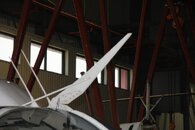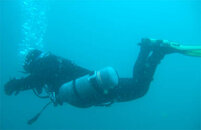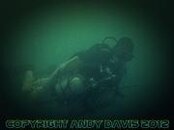Absolutely, me too.
That said, when teaching, I'm always of the mind that the student might have different views to me. I'd allow forward-pointed gauges in an OW context, but not for more advanced applications, such as deco or technical wreck.
My view is that you find the optimum config for the long-term, but sometimes a staggered/fluid approach works better - allowing changes over time, as the diver evolves.
I had a student last week, whose rental kit (not rented from me) had the 'metal braided' short HP hoses - and those didn't lend themselves at all towards downward routing. It was basic sidemount, so I didn't insist on a change in configuration.
I use metal gauges, of the small size. No boots. Had no issues with stress on the HP hoses.
See now i have to disagree with them running down
my 2 spgs sit right at my collar bone, they don't hang low and I can see them and can see when something is about to be possibly snagged.....if they were running down the tank then if they are on the bottom of said tank, I can no longer see them and they are likely the lowest point, might take some abuse and get hung up on things.....if they are on the top of the tank then when I'm carrying a deco or stage bottle top mounted then it would be very difficult to get at and take some abuse.
Different strokes for different folks though, like I was told when i first started with SM, ask 10 different divers and get 12 different answers lol








